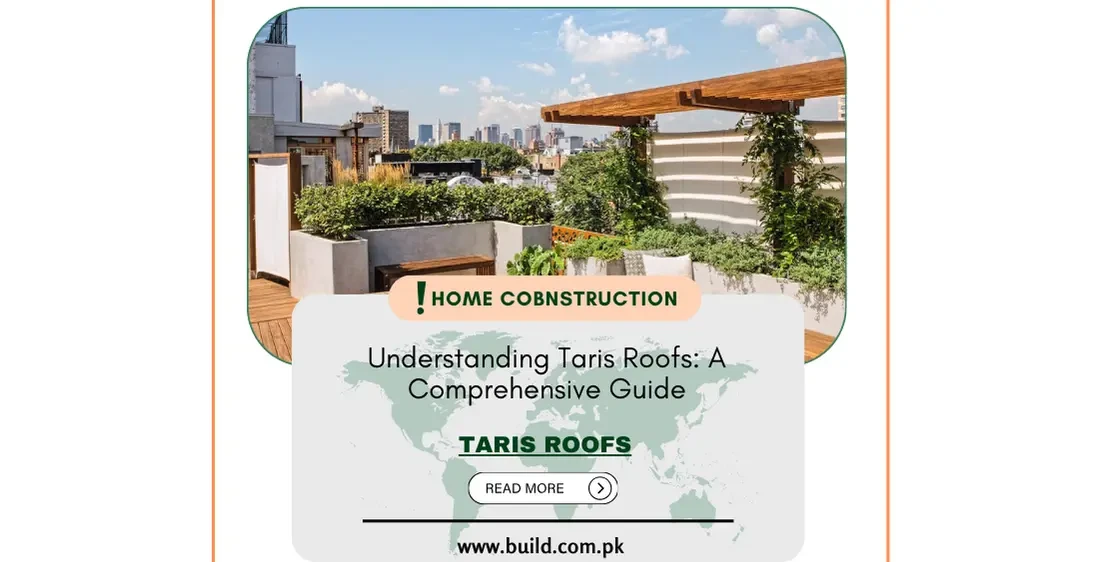Understanding Taris Roofs: A Comprehensive Guide

Introduction:
Taris roofs, also known as tar paper roofs, refer to a type
of roofing system that incorporates tar-saturated fet paper as a primary
component. While taris roofs are less common today due to advancements in
roofing materials, they remain a topic of interest for historical and
architectural enthusiasts. In this detailed blog post, we'll explore the
origins, construction, benefits, drawbacks, and maintenance considerations
associated with taris roofs, providing a comprehensive guide to this unique
roofing method.
Origins and Construction of Taris Roofs
Taris roofs have historical significance and were widely used
in the past for residential and commercial buildings. The construction of a
taris roof typically involves the following components:
Felt Paper:
The foundation of a taris roof is heavy-duty felt
paper, also known as roofing felt or tar paper. This material is saturated with
tar or asphalt to enhance durability and weather resistance.Felt paper serves
as a protective barrier against moisture and acts as a base for other roofing
materials. It provides additional insulation and helps prevent water
infiltration.
Tar or Asphalt Coating:
The felt paper is coated with tar or
asphalt to create a waterproof membrane. Tar or asphalt coating adds a layer of
protection against rain, snow, and UV exposure. It enhances the longevity of
the roof by sealing seams and joints, reducing the risk of leaks.
Gravel or Aggregate Covering:
Some taris roofs feature a
layer of gravel or aggregate spread over the tarred surface. The gravel or
aggregate serves as a ballast, providing additional protection against UV rays
and wind uplift. It also improves the aesthetic appearance of the roof and
helps regulate temperature fluctuaions.

Benefits of Taris Roofs
Despite being less common today, taris roofs offer several
benefits that contributed to their popularity in the past:
Cost-Effectiveness:
Taris roofs are relatively affordable
compared to modern roofing materials such as asphalt shingles or metal panels.
The materials used in taris roofs, including felt paper and tar/asphalt, are
cost-effective and widely available. This made taris roofs a practical choice
for budget-conscious homeowners and builders.
Waterproofing Properties:
The tar or asphalt coating provides
excellent waterproofing properties, protecting the underlying structure from
moisture damage. The tar-saturated felt paper forms a durable barrier against
rain, snow, and ice, preventing water infiltration and reducing the risk of
leaks.
Durability:
Taris roofs are known for their durability and
ability to withstand harsh weather conditions. When properly istalled and
maintained, taris roofs can last for many years. The tar or asphalt coating
helps resist damage from UV rays, temperature fluctuations, and high winds.
Drawbacks and Maintenance Considerations
While taris roofs offer certain advantages, they also have
drawbacks and maintenance requirements to consider:
Susceptibility to Heat and UV Exposure:
Taris roofs can
become brittle and degrade over time when exposed to prolonged sunlight and
heat. rays can cause the tar or asphalt coating to crack and deteriorate,
compromising the roof's waterproofing abilities. Regular inspections and
maintenance are necessary to identify and repair damage promptly.
Weight and Structural Considerations:
Taris roofs can be
heavy due to the layers of felt paper and tar/asphalt coating. The weight of a
taris roof may require additional structural support, especially for older
buildings with load-bearing limitations. Consult a roofing professional to
assess structural integrity and reinforcement needs.
Maintenance Requirements:
Taris roofs require regular
maintenance to prolong their lifespan and prevent issues such as leaks and
water damage. Routine inspections, cleaning of debris, and prompt repairs of
damaged areas are essential for maintaining the integrity of a taris roof.
Apply fresh tar or asphalt coating as needed to reinforce waterproofing
capabilities.
Modern Alternatives to Taris Roofs
Today, homeowners have access to a wide range of roofing
materials that offer superior performance and longevity compared to traditional
taris roofs:
Asphalt Shingles:
Asphalt shingles are a popular roofing
choice due to their affordability, durability, and ease of installation.
Asphalt shingles come in various colors and styles, offering versatility and
curb appeal. They are resistant to UV rays and weather extremes, making them a
low-maintenance option for residential roofs.
Metal Roofing:
Metal roofing systems are durable,
lightweight, and eco-friendly, with a lifespan of 50 years or more. Metal roofs
come in panels or shingles made from steel, aluminum, or copper. They offer
superior protection against fire, wind, and water infiltration, making them
ideal for modern homes and commercial buildings.
Synthetic Roofing Materials:
Synthetic roofing materials such
as polymer-based tiles or slate imitations offer the look of natural materials
with enhanced durability and weather resistance. Synthetic roofing materials
are lightweight and easy to install, providing excellent insulation and
protection against environmental factors. They come in a wide range of colors
and textures to mimic the appearance of traditional roofing materials.
Conclusion:
In conclusion, taris roofs have a rich history and served as a practical roofing solution for generations. Wile modern roofing materials have largely replaced taris roofs due to advancements in technology and durability, the legacy of taris roofs lives on in historic buildings and architectural preservation efforts.









